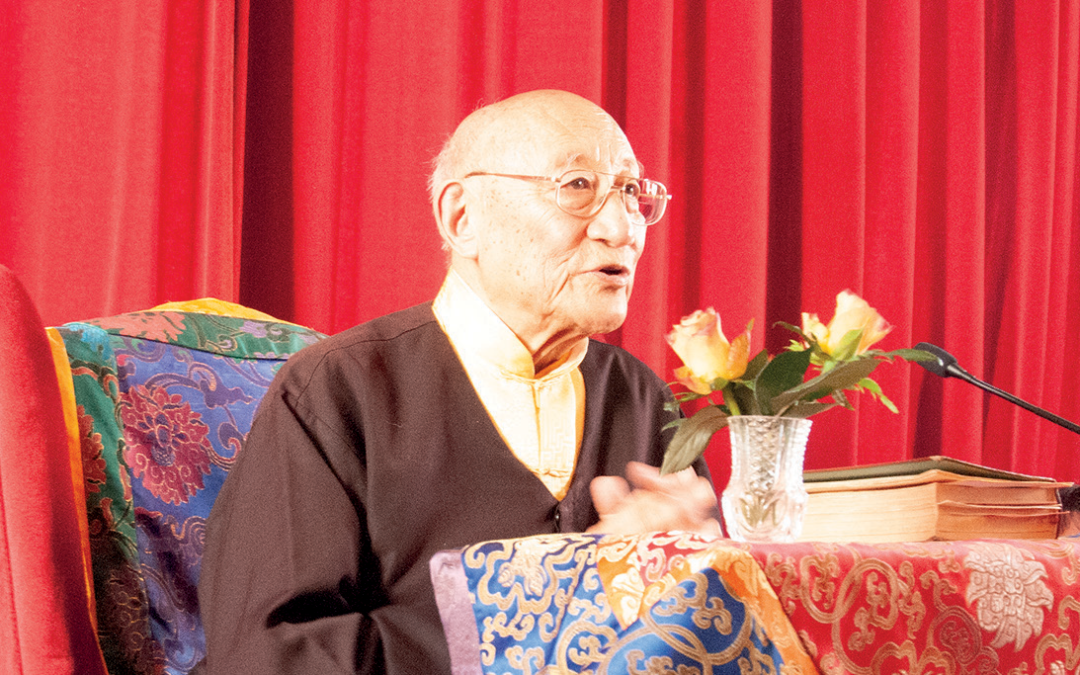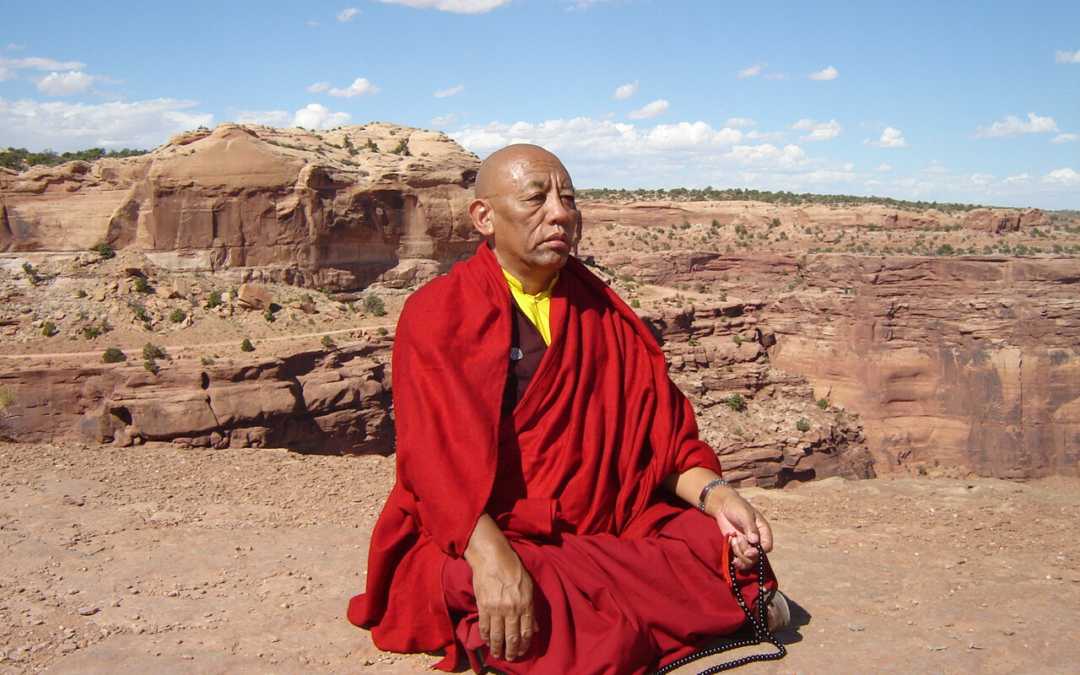
Memories of Ato Rinpoche
Ato Rinpoche | 1933 – 2024
“Be kind. Just be kind.” Those were Ato Rinpoche’s simple but profound words when I asked him, many years ago, how to stay patient while living with a severely autistic stepson. I had expected some profound teaching, perhaps about transforming obstacles into the path. But as was often the case, Rinpoche gave the answer I needed to hear, rather than the one I wanted to hear.
It was similar when I asked him (with starry eyes), in one of my first meetings with him, about the value of doing a three-year retreat. Rinpoche smiled his usual twinkly smile and said simply: “Three-year retreat is easy. The difficult thing is practising every day, for your whole life.” Again, he had ignored my expectations and given an answer whose truth and profundity I am still now slowly understanding.
What were some of Ato Rinpoche’s qualities? A radiant, loving presence, and a deep and genuine humility and simplicity masking his deep realisation. Plus the ability to drag us away from our fantasies about high empowerments and pointing out instructions, and back to the practical, nitty-gritty of trying to live the teachings every day. Which, of course, was what he did.
Many of us heard him teach on the Noble Eightfold Path countless times. Whether it was this teaching, or commenting on songs of Milarepa, Rinpoche always kept his focus practical and down-to-earth. With his trademark grin, he would remind us again and again, “Nobody’s perfect, but it’s worth a try.” And “Go along with it, keep it going.” Perhaps the closest he came to publicly pointing out the nature of the mind was his occasional instruction to “Mind the gap!” Always with the grin and the twinkle.
Rinpoche, like his cousin Chime Rinpoche, knew that most of us didn’t belong in a cave, a three-year retreat, or monastic robes. He knew most of us needed to keep our focus on practising within a family and working environment right now. When I recently mentioned wanting to do more retreat, he immediately said “Yes, but don’t push it. It is much more important to recognise our nature for short moments as often as we can, every day.”
Rinpoche’s humility was amazing and genuine. At the end of a teaching in Germany in 1998, he told us to take from his teaching anything that seemed valid and useful for us but to leave anything else behind in the shrine-room. He added, smiling, “The masters of my lineage have always been extremely patient and tolerant of my rubbish, so you can leave it here with them.”
Another time, I was attending a course in Pullahari Monastery near Kathmandu. Pullahari is the monastery of Jamgon Kongtrul Rinpoche. Ato Rinpoche’s root guru was the second Jamgon Kongtrul, Khyentse Ozer. So while Rinpoche was visiting Kathmandu, he came up to Pullahari, alone, unannounced, wearing ordinary clothes, and walked into the monastery stupa temple to pay his respects and circumambulate the stupa of the third Jamgon Kongtrul incarnation, who had passed away a few years earlier. The only thing was, he walked in right in the middle of the morning teachings which were being given by Drupon Khenpo Lodro Namgyal, a very special lama himself. The moment he walked in, Drupon Khenpo stopped teaching and jumped off his seat, remaining frozen until Rinpoche left a minute later. Rinpoche could come as quietly and incognito as he liked, but the lamas knew exactly what level of being they were dealing with.
Such was Rinpoche’s humility, he seemed to even feel that praising his own guru publicly would be a sign of pride. During teachings at Marpa House one time, I asked Rinpoche to tell us a little about his guru’s qualities. He totally deflected the question, saying that it is impossible to see the qualities of a master, before moving on immediately.
It is said in the teachings, that when a Bodhisattva reaches a certain level, they become “like an eight-month pregnant woman” – no longer able to conceal the qualities that their realisation gives birth to. Ato Rinpoche was like that. He may have tried his best to seem ordinary, but the trouble was, he was extraordinarily ordinary! So we weren’t fooled – sorry Rinpoche!
“Be kind. Just be kind.” Rinpoche, you made it sound so simple. I guess it was, for you (though you would never admit it). When somebody totally embodies kindness with their whole being, such words can have a profound impact on those who hear them. I didn’t really get the transmission, but that’s on me, not the lama. For those of us who still need it, may your inspiration constantly remind us to “keep it going.” Yes, every day. For our whole life. Thank you, Rinpoche. Thank you.
Jon Armour © 2024

